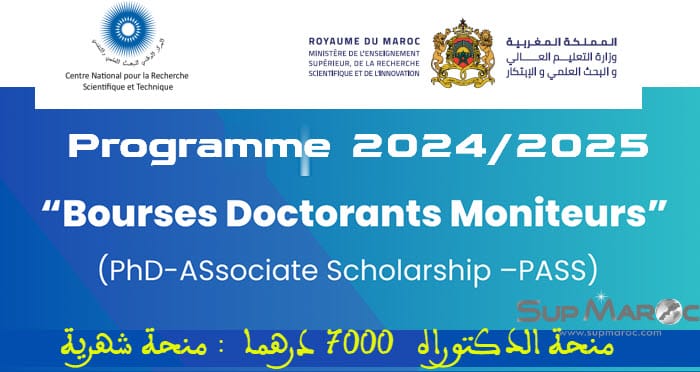Faculté des Sciences et Techniques FST Settat
APPEL A CANDIDATURE POUR L’INSCRIPTION EN DOCTORAT
CENTRE D’ETUDES DOCTORALES (CEDoc)
« SCIENCES ET TECHNIQUES »
2015-2016
Le CEDoc Sciences et Techniques vous annonce que l’appel à candidature pour inscription au cycle doctoral, au titre de l’année 2015-2016 .

Formation Doctorale
- Biologie, Santé et Environnement, (BSE)
- Chimie Appliquée et Environnement, (CAE)
- Mathématiques Appliquées et Informatique, (MAI)
- Physique et Sciences de l’Ingénieur, (PSI)
Conditions d’admission
Être titulaire d’un Master, DESA, DESS, Ingénieur d’état ou d’un diplôme reconnu équivalent, (voir les diplômes donnant accès au cycle doctoral dans le siteweb de la FST)
Présélection des candidats
Une présélection des candidats sera effectuée sur examen du dossier de candidature par le CEDoc. La présélection prendra en considération le cursus universitaire du candidat.
Dossier de candidature
- Demande manuscrite adressée à Monsieur le Doyen de l’établissement de domiciliation du CEDoc S/C du Directeur du Centre d’Etudes Doctorales ;
- Curriculum vitae avec photo du candidat ;
- Formulaire de préinscription (2015-2016) dûment rempli (à télécharger du site web : www.fsts.ac.ma);
- Copies légalisées des diplômes : Baccalauréat, (Bac + 3/4) et (Bac+5),
- Relevés des notes légalisées : Baccalauréat, (Bac+3/4) et (Bac+5) (obligatoire);
- L’arrêté de l’équivalence pour les diplômes étrangers
- Photocopie légalisée du CIN ;
- Fiche de renseignement reçue par mail après inscription en ligne
- 2 photos d’identité
Dépôt de dossier : du 26/10/2015 au 03/11/2015 à 15h.
NB : Tout dossier incomplet ne sera pas pris en compte.
Le CEDoc Science et Technique domicilié à la Faculté des Sciences et Techniques de Settat lance un appel à candidature au cycle doctoral pour l’année universitaire 2015/2016
important : les étudiants qui ont fait 2 choix différents, doivent ramener 1 dossier pour chaque sujet, en mettant les pièces dans chemises cartonnées de couleur (rose pour la formation doctorale MAI, bleu pour PSI, jaune pour CAE, vert pour BSE)








lien de pré-inscription pas trouver…
I say:Only Celts for me are the existing Celtic ecnhitities. (…) but, for instance, the Celtic (I mean the pre-Anglo-Saxon Celtic, not the « original » one) contribution in the people of the UK is.Your response:That sentence is utterly contradictory. Hope you realize that.The premise of my argument is that little change has occured in the genetic structure of the Celtic populations that survived the Anglo-Saxon invasions since pre-AS times (at least in the regions unaffected by the Viking invasions). Still, the difference between what you see in Britain (excluded what is clearly Nordic) and what you see in the mainland (northern France, Belgium, Rhineland, etc.) is pre-Celtic with all likehood and probably even pre-Neolithic. So for instance when you see more R1b in the islands than in the mainland, it means that it’s pre-Celtic. Inversely, as you see more R1a in the mainland, it means it’s Celtic (or other IE). I doubt you’ll find much difference in mtDNA because IE migrations were mostly male-mediated. In any case the continent was earlier and more intensely affected by the IE waves that eventually also reached the islands. So any cline increasing to the sea is pre and any cline growing to Central or Eastern europe is most likely post.I think there is little evidence to substantiate your claims above. The genetic structure of Europe was already messed up before the IE invasions. That is why it is near-impossible to detect the IE invasions genetically.